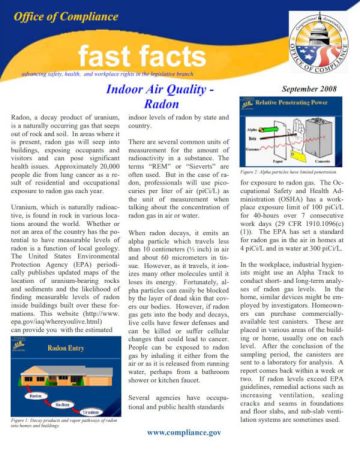Radon, a decay product of uranium, is a naturally occurring gas that seeps out of rock and soil. In areas where it is present, radon gas will seep into buildings, exposing occupants and visitors and can pose significant health issues. Approximately 20,000 people die from lung cancer as a result of residential and occupational exposure to radon gas each year.
Uranium, which is naturally radioactive, is found in rock in various locations around the world. Whether or not an area of the country has the potential to have measurable levels of radon is a function of local geology. The United States Environmental Protection Agency (EPA) periodically publishes updated maps of the location of uranium-bearing rocks and sediments and the likelihood of finding measurable levels of radon inside buildings built over these formations. This website (https://www. epa.gov/iaq/whereyoulive.html) can provide you with the estimated indoor levels of radon by state and country.
There are several common units of measurement for the amount of radioactivity in a substance. The terms “REM” or Sieverts” are often used. But in the case of radon, professionals will use picocuries per liter of air (piCi/L) as the unit of measurement when talking about the concentration of radon gas in air or water.
When radon decays, it emits an alpha particle which travels less than 10 centimeters (½ inch) in air and about 60 micrometers in tissue. However, as it travels, it ionizes many other molecules until it loses its energy. Fortunately, alpha particles can easily be blocked by the layer of dead skin that covers our bodies. However, if radon gas gets into the body and decays, live cells have fewer defenses and can be killed or suffer cellular changes that could lead to cancer. People can be exposed to radon gas by inhaling it either from the air or as it is released from running water, perhaps from a bathroom shower or kitchen faucet.

